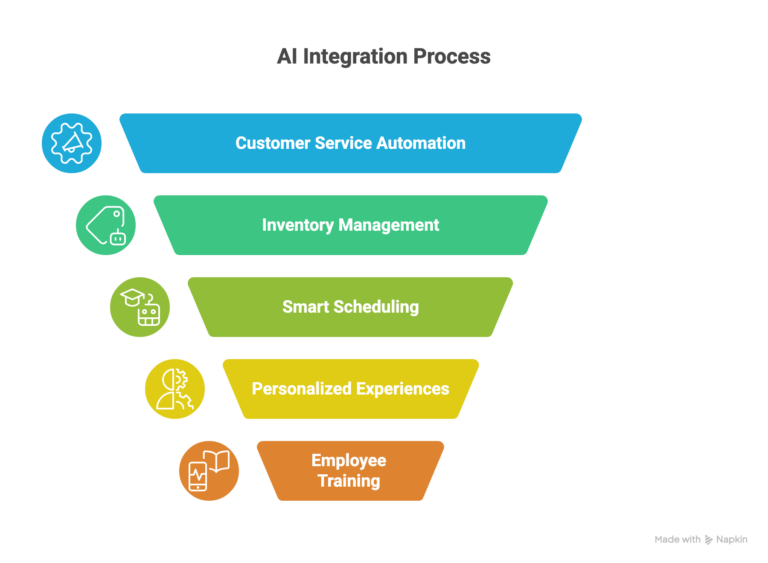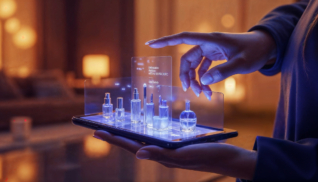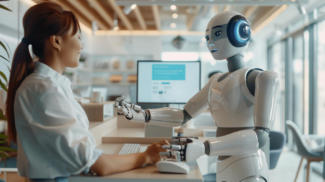Greetings! I'm Aneesh Sreedharan, CEO of 2Hats Logic Solutions. At 2Hats Logic Solutions, we are dedicated to providing technical expertise and resolving your concerns in the world of technology. Our blog page serves as a resource where we share insights and experiences, offering valuable perspectives on your queries.

Your best sales associate just helped a customer find the perfect gift after a thoughtful conversation. Meanwhile, AI quietly handled the inventory check, pulled up purchase history, and sent a personalized follow-up email. Your employee provided the human connection; AI just cleared the obstacles from her path.
You’ve seen the headlines about artificial intelligence in retail replacing workers, and you’re worried. As a retail business owner, you’re caught in an impossible dilemma: stay competitive with technology or stay loyal to your team.
Here’s the truth: AI in retail isn’t about choosing between innovation and your workforce. It’s about giving your team superpowers.
This guide shows you exactly how to implement retail AI integration that strengthens your staff, improves customer experiences, and drives measurable results without a single pink slip. You’ll discover practical strategies, real success stories, and a clear roadmap for your business.
Why AI Won’t Replace Your Retail Staff
AI staff augmentation means using technology to enhance what your employees already do well, not replace them entirely. Think calculators for accountants; they freed them from tedious arithmetic to focus on financial strategy. Similarly, AI in retail handles repetitive tasks so your staff can focus on what humans do best: building relationships, solving complex problems, and creating memorable experiences.
According to industry research, 92% of successful retail automation implementations focus on workforce augmentation rather than replacement. Why? Human-AI collaboration in retail delivers better results than AI working alone.
Consider these everyday scenarios:
- Without AI: Your manager spends 6 hours weekly creating schedules manually.
- With AI augmentation, Smart scheduling creates optimized schedules in 30 minutes. Your manager spends the 5.5 hours you saved coaching team members.
What AI Cannot Replace:
- Emotional Intelligence: Reading customer moods, recognizing when someone needs help versus space, responding with genuine empathy
- Creative Problem-Solving: Finding solutions for unique situations outside standard procedures
- Relationship Building: Creating loyal customers through personal connections and remembering preferences
- Complex Conflict Resolution: Handling upset customers and turning negative experiences positive
A PwC study found that 59% of customers feel companies have lost touch with the human element. Your staff provides that element. AI-powered retail solutions amplify their ability to connect, not diminish it.
Key Areas for AI Integration

Customer Service Automation
Customer service automation handles basic inquiries 24/7, store hours, return policies, and product availability, while your team tackles complex customer needs. A medium-sized apparel retailer saw response times drop from 4 hours to 8 minutes for basic questions. Their customer service team? They became “customer success specialists,” handling personalized consultations, with employee satisfaction increasing 34%.
Inventory Management & Demand Forecasting
Inventory management AI analyzes sales patterns, weather data, and local events to accurately predict demand. A regional home goods chain reduced overstock by 28% and stockouts by 43% within six months. Their inventory specialists transitioned from manual counting to analyzing market trends—work they found far more engaging.
Smart Employee Scheduling
AI considers employee preferences, availability, skills, and labor laws to create optimized schedules. A grocery chain cut scheduling time from 5 hours to 45 minutes weekly per manager. More importantly, employee satisfaction with schedules increased 41% because the system honored availability preferences better than overworked managers could.
Personalized Shopping Experiences
AI for personalized shopping analyzes purchase history to suggest relevant products. A beauty retail chain saw average transaction value increase by 23%. Their advisors now receive AI-generated customer profiles before consultations, allowing highly relevant recommendations to be made immediately.
Employee Training & Support Systems
AI accelerates onboarding and provides instant answers. An electronics retailer reduced onboarding from 3 weeks to 8 days. New hires reached full productivity 40% faster, and experienced staff used the AI assistant to answer complex technical questions on the spot.
Not Sure Where to Start?
Step-by-Step Implementation Strategy

Define Clear Business Objectives
Before investing in AI and retail workforce technology, answer these questions:
- What specific problem are we solving?
- What does success look like? (Use quantifiable metrics)
- How will this benefit our employees?
- What’s our budget and timeline?
Start with a Proof of Concept
Don’t revolutionize everything overnight. Choose one high-impact, low-risk area:
Best First Projects:
- Smart scheduling (clear ROI, minimal disruption)
- Basic chatbot for FAQs (easy to measure)
- Inventory management for one category (contained scope)
Plan a 90-day proof of concept. Measure results rigorously. If it works, expand.
Invest in Employee Training & Communication
This is where most retail AI integration efforts fail. Your communication strategy should:
- Explain the “why”, improve their work experience, not replace them
- Provide hands-on training during paid work hours
- Create “AI champions” among staff to help peers
- Maintain open feedback channels
- Celebrate wins publicly
Key Message: “This tool works for you, not the other way around.”
Choose the Right AI Tools
Evaluate vendors on these must-haves:
- Ease of use (minimal training required)
- Integration with existing systems
- Scalability and responsive support
- Transparent pricing and data security
Have your employees attend demos and give feedback. They’ll use the tool daily; they should help choose it.
Monitor, Measure & Iterate
Set clear KPIs before implementation:
Track:
- Time saved on specific tasks
- Employee satisfaction scores
- Customer wait times and satisfaction
- Sales per employee and transaction value
Review daily for technical issues, weekly for feedback, monthly for KPI performance, and quarterly for strategic assessment.
Real-World Success Stories
Target developed an AI-powered mobile app providing real-time inventory locations, product information, and customer purchase history. Results: 67% reduction in time spent searching for products, increased employee satisfaction, and zero positions eliminated. Target empowered 350,000+ store employees with AI tools, proving that major retailers can scale technology without workforce reduction.
Want Results Like These?
Conclusion
The future of retail isn’t about choosing between technology and people; it’s about giving your people better technology.
Throughout this guide, you’ve discovered that retail AI integration creates a win-win-win: your business becomes more efficient and profitable, your employees enjoy more meaningful work, and your customers receive better experiences.
When implemented thoughtfully, AI in customer experience and operations delivers measurable benefits: 40-60% reduction in administrative time, 18-28% increase in transaction value, and 30-45% reduction in repetitive tasks for employees.
FAQ
Will AI take my employees' jobs?
Not if you implement it correctly. The goal of AI staff augmentation is enhancement, not replacement. Retailers who implement AI thoughtfully maintain or increase headcount while changing the nature of work. Your cashiers might become customer experience specialists. Your managers might spend less time on paperwork and more time coaching.
What tasks should remain human-led?
Keep human: complex problem-solving, emotional customer situations, relationship building, training, strategic decisions. Automate: repetitive data entry, basic FAQs, routine inventory counts, schedule creation, standard transactions.
How long does integration take?
Typically 4-7 months from decision to full implementation: 2-4 weeks planning, 4-8 weeks pilot, 4-6 weeks evaluation, 4-12 weeks full deployment. You'll start seeing benefits from your pilot within 60 days.

Related Articles







